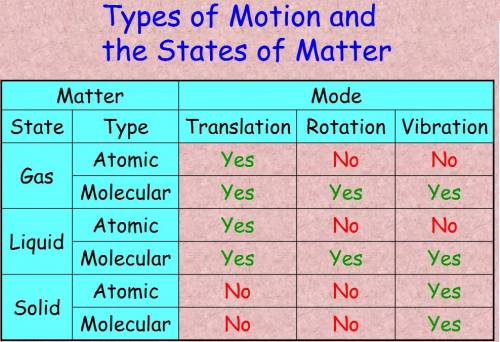
Chemistry, 26.07.2019 12:30 joebossmc2184
Match the theoretical motions of particles with their associated phases. solid, gas, liquid. 1. oscillation about a fixed point 2. translation, vibration, rotation 3. rotation and vibration

Answers: 1


Another question on Chemistry

Chemistry, 21.06.2019 13:20
Amixture of gaseous sulfur dioxide and oxygen are added to a reaction vessel and heated to 1000 k where they react to form so3(g). if the vessel contains 0.669 atm so2(g), 0.395 atm o2(g), and 0.0851 atm so3(g) after the system has reached equilibrium, what is the equilibrium constant kp for the reaction: 2 so2(g) o2(g) ⇌ 2 so3(g)
Answers: 3

Chemistry, 21.06.2019 22:20
Calcium hydride (cah2) reacts with water to form hydrogen gas: cah2(s) + 2h2o(l) → ca(oh)2(aq) + 2h2(g) how many grams of cah2 are needed to generate 45.0 l of h2 gas at a pressure of 0.995 atm and a temperature of 32 °c?
Answers: 2


You know the right answer?
Match the theoretical motions of particles with their associated phases. solid, gas, liquid. 1. osci...
Questions



History, 06.11.2020 23:10

Mathematics, 06.11.2020 23:10



Geography, 06.11.2020 23:10

Arts, 06.11.2020 23:10


Social Studies, 06.11.2020 23:10

Mathematics, 06.11.2020 23:10






Mathematics, 06.11.2020 23:10


Physics, 06.11.2020 23:10




